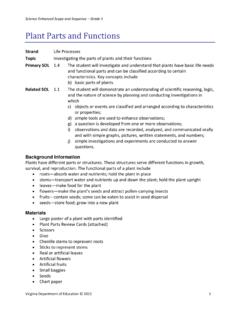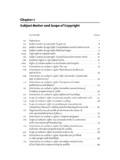Transcription of Team Defending Team Defense is a Dance Individual and ...
1 1 Bruce s Training Book: team Defending Created: 1996 1993 - 2006 Bruce Brownlee, All Rights Reserved Last Updated: 11 April 2006 TACTICS team Defending team Defense is a Dance Dancers must learn Individual Dance steps, but must also learn to Dance in rhythm with other dancers, and must never miss a beat. team Defense is a Dance . The Individual defenders must not only learn Individual Defending , including marking, covering, and tracking, but must also learn to move in concert with the rest of the team , at the moment the team moves, not later. Individual and Group Defending Terms Understand the terms that describe the roles of players and parts of the field.
2 Mark The person you are marking. Marking Guarding your mark goal-side and ball-side to prevent your mark from getting the ball, from turning with the ball, or from moving with the ball toward our goal. Covering Guarding a space on the field so that the other team wants to use. This is usually behind another defender. Tracking Running with your mark to prevent your mark from gaining possession of the ball in available space behind or beside other defenders. Penetrating Attacking with the ball by trying to dribble past defenders into the penalty area for a shot. First attacker The attacker with the ball. First defender The nearest defender goal-side of the ball.
3 Second attacker Attackers in available space close enough to the ball to provide support for combination play. Second defender Defenders close enough to support the first defender by covering the space behind the first defender are second defenders. Third attacker All other attackers. Third defender All other defenders. 2 Bruce s Training Book: team Defending Created: 1996 1993 - 2006 Bruce Brownlee, All Rights Reserved Last Updated: 11 April 2006 TACTICS Available Space Space where the first attacker can play the ball. Center of the Field An imaginary line drawn from goal to goal. Delay The first defender stops the first attacker from penetrating by marking and delaying, not by diving in for an attempted tackle.
4 Support The second defender covers the space behind the first defender. Balance Third defenders covering space away from the ball are providing balance. If the ball is switched, the third defenders must decide between winning the ball or closing the space between themselves and the attacker who will receive the ball. Tuck In Move closer to the ball and to cover for the defender closer to the ball. Stand Up Delay the first attacker. Don't dive in. Hold ! Keep space between you and the first attacker by backing up and matching speed. Match Speed When the first attacker runs at you with the ball, you must back up as fast as the attacker runs forward, or you will lose the space between you.
5 If you do not keep enough space, you will be forced to attempt a tackle, and may get beat. Dive In Jumping at the first attacker or taking a wild swing in an effort to tackle the ball. Except when they must tackle to stop a shot, good defenders do not tackle unless they have support, that is, someone covering the space behind them. Diving in is a good way to get beat. Get Beat What happens when you dive in on a tackle and the first attacker is able to get behind you with the ball. Stand up instead. 3 Bruce s Training Book: team Defending Created: 1996 1993 - 2006 Bruce Brownlee, All Rights Reserved Last Updated: 11 April 2006 TACTICS Ball Watching Staring at the ball as your mark drops the ball or as the ball is being played on the other side of the field, forgetting to instantly back off your mark when the ball is away.
6 Not backing off instantly creates available space behind you that the attackers can use. If you do not back off your mark instantly, the attackers will play the ball into the space behind you. Chipped When your mark drops the ball to a midfielder, your mark will wait for the midfielder to chip the ball into the space behind you, and your mark will sprint into the space behind you to be first to the ball. If you lose, you were chipped. To avoid this, you must back off your mark a step or two after your mark drops the ball. No Get Don't allow your mark to receive the ball. Step in front and take the ball away. No Turn If your mark gets the ball with back to our goal, don't allow your mark to turn toward our goal.
7 Track your mark at about arm's length making sure that you can see the ball. If your mark starts to turn, tackle hard and tackle through when your mark is about half-turned. Make sure that you can see the ball before committing to the tackle. No Move If your mark has the ball facing our goal, hold. This means delay your mark (stand up) by quickly adjusting your position to remain between our goal and the ball. No Shoot When really close to the goal, keep your hips near (but just off) the line of play between the ball and the goal so that the attacker facing you can not shoot. The attacker will use deception and change of pace to try to move you far off the line of play to create space for a shot.
8 Remember, only the ball has to see the goal for there to be room to shoot. 4 Bruce s Training Book: team Defending Created: 1996 1993 - 2006 Bruce Brownlee, All Rights Reserved Last Updated: 11 April 2006 TACTICS How To Defend As A team Check the Ball First We check ball first. This means that the first we stop the progress of the ball by marking and delaying the first attacker. Cover Our First Defender The first defender must always have a supporting second defender who can cover the space behind the first defender. Pick Up Near the Ball Pick up 1 for 1 near the ball starting with ball. Let the Far Side Go We let far side player go, staying just close enough to recover the space (makeup the distance and close the player down) while the ball crosses.
9 Tuck In When the ball is on the wing, the outside defender on the opposite side must tuck in to cover the space behind the nearest inside defender. Outside defenders stay close enough to the attacking wing player to make up the distance to the player as the ball is crossed. The outside defender should keep a position far enough off the wing attacker so that the outside defender can be first to the nearest goal post in case the ball is crossed to the attacking wing for a shot or header. Ball-side, Goal-side Outside defenders play closer to the center of the field and closer to the ball than their marks. Back Off on the Drop Wing defenders on mark with ball back off rapidly and instantly when their mark drops the ball so that they can't be chipped.
10 No ball watching when the ball is dropped ! 5 Bruce s Training Book: team Defending Created: 1996 1993 - 2006 Bruce Brownlee, All Rights Reserved Last Updated: 11 April 2006 TACTICS Centers Work Together The central defenders, stopper and sweeper, work together as central defenders instead of playing with the stopper 10 yards in front of the sweeper. Center Midfielders Track Center midfielders track back with their mark into the top of the penalty area x to stop their mark from shooting from the outside on balls dropped back, and x to stop their mark from getting the ball behind our other defenders.






